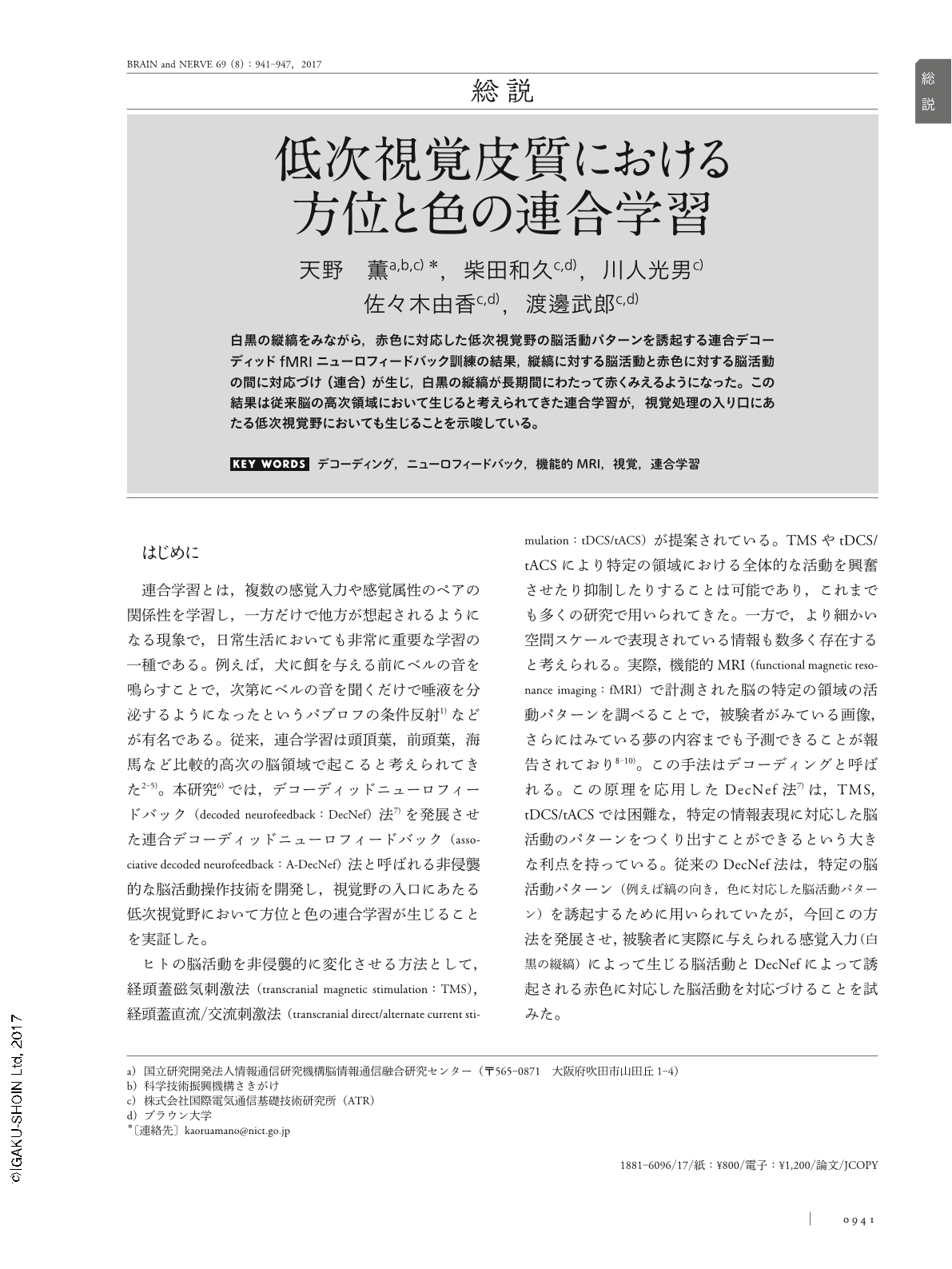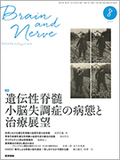Japanese
English
- 有料閲覧
- Abstract 文献概要
- 1ページ目 Look Inside
- 参考文献 Reference
白黒の縦縞をみながら,赤色に対応した低次視覚野の脳活動パターンを誘起する連合デコーディッドfMRIニューロフィードバック訓練の結果,縦縞に対する脳活動と赤色に対する脳活動の間に対応づけ(連合)が生じ,白黒の縦縞が長期間にわたって赤くみえるようになった。この結果は従来脳の高次領域において生じると考えられてきた連合学習が,視覚処理の入り口にあたる低次視覚野においても生じることを示唆している。
Abstract
Associative learning is an essential neural phenomenon where the contingency of different items increases after training. Although associative learning has been found to occur in many brain regions, there is no clear evidence that associative learning of visual features occurs in early visual areas. Here, we developed an associative decoded functional magnetic resonance imaging (fMRI) neurofeedback (A-DecNef) to determine whether associative learning of color and orientation can be induced in early visual areas. During the three days' training, A-DecNef induced fMRI signal patterns that corresponded to a specific target color (red) mostly in early visual areas while a vertical achromatic grating was simultaneously, physically presented to participants. Consequently, participants' perception of “red” was significantly more frequently than that of “green” in an achromatic vertical grating. This effect was also observed 3 to 5 months after training. These results suggest that long-term associative learning of two different visual features such as color and orientation, was induced most likely in early visual areas. This newly extended technique that induces associative learning may be used as an important tool for understanding and modifying brain function, since associations are fundamental and ubiquitous with respect to brain function.

Copyright © 2017, Igaku-Shoin Ltd. All rights reserved.


